Excerpts from Jim Conrad's
Naturalist Newsletter
entry from field notes dated January 19, 2023, taken along steep, one-lane gravel road ascending forested, northeast-facing mountain slope, elevation ±2,380m (7600 ft); bedrock of Cretaceous limestone; on the south side of Pinal de Amoles, Querétaro state, MÉXICO, (N21.134°, W99.629°)
LOBELIA SARTORII
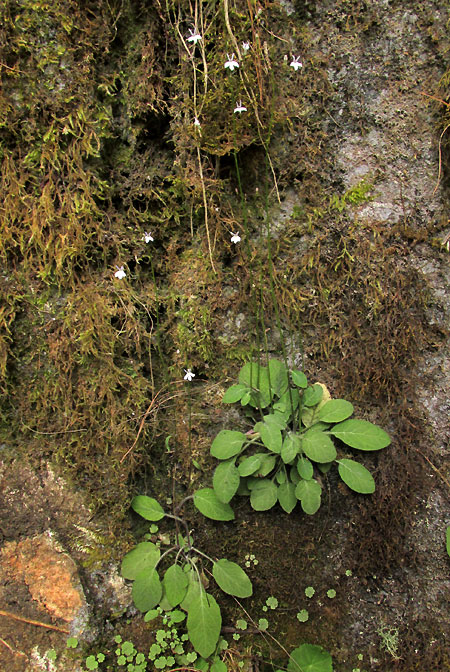
On the mossy, shaded, almost vertical face of a roadcut on a steep, usually shaded slope forested mostly with pines, the above pale blue lobelias formed an attractive little colony. Their identities as lobelias was easy to determine because of the form of their corollas:
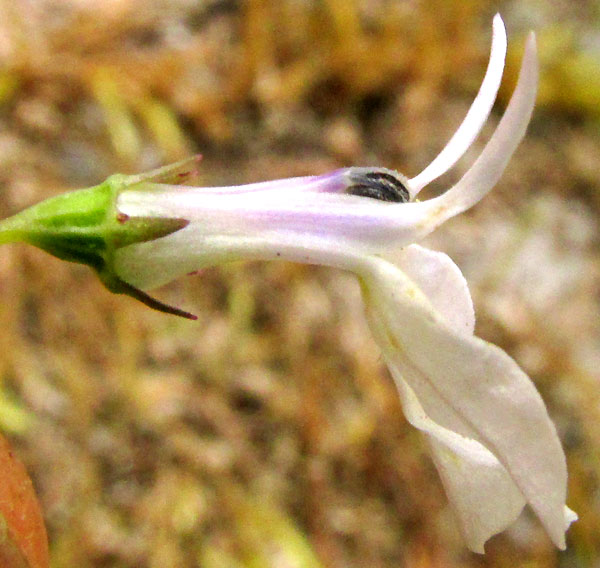
The flowers were bilaterally symmetrical, with distinct upper and lower lips. The upper lip and corolla tube were split lengthwise, enabling the dark anthers, which were united along their edges, to form a down-curving cylinder around the style, and emerge into view. All ~415 known species of the genus Lobelia, known in English as lobelias, display these features. In the above photo, field marks important for distinguishing this species from the other 50+ Mexican species include the corolla tube being about the same as the lower lip, and the calyx tube, or hypanthium, covering much of the ovary, so the species produces semi-inferior ovaries.
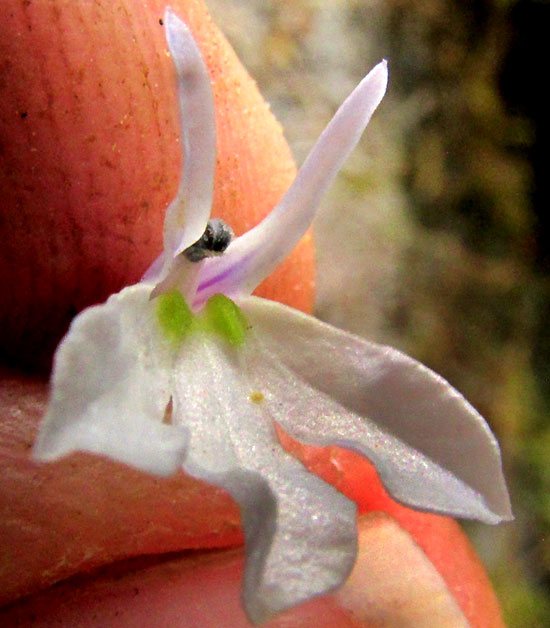
From the front it's seen that two green "nectar guides" direct pollinators landing on the lower lip into the corolla tube. Notice that the curved anthers are short-hairy.
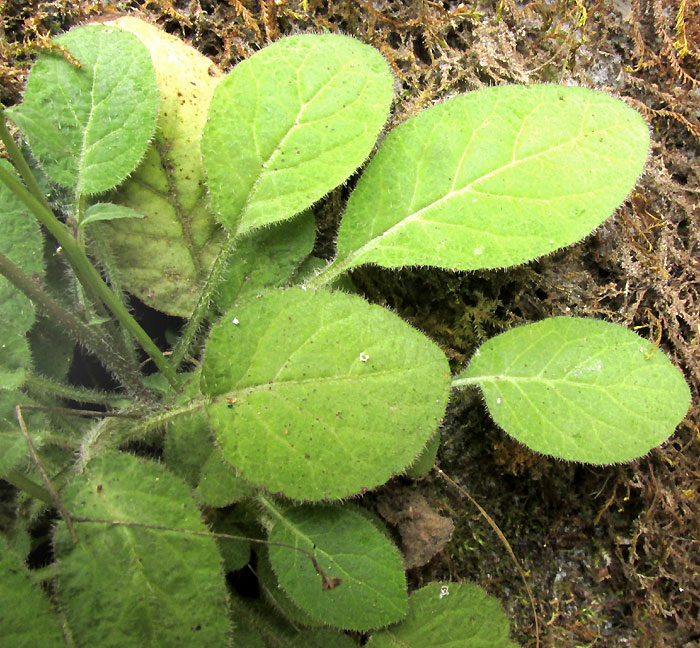
Leaves, clustered toward the bottom, have definite petioles and are conspicuously hairy.
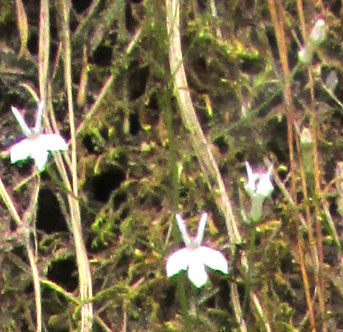
One last feature helpful for identification to the species level is that the flowers are held away from one another, each blossom attached to an unusually long (to about 3.5 cm) stalk, or pedicel. This is barely visible in the photo at the right, but it's best seen on the closed blossom at the image's top, right corner.
All the above details point to LOBELIA SARTORII, fairly commonly encountered in mountain forests of oak and pine, and sometimes in montane deciduous forests, from central Mexico, mainly in the eastern Sierra Madres, south to Guatemala and Belize. It has no English name. The Flora del Bajío, covering this part of upland central Mexico, says that Lobelia sartorii is very variable in terms of plant and flower size, as well as the form of the leaves. It describes the flower color as blue to purple or white.
In the 2021 publication by Maite Lasqurain-Rangel and others entitled "Plantas americanas utilizadas como condimento en la cocina mexicana" -- American plants used as spice in Mexican cooking -- it's reported that Lobelia sartorii is used as a spice in stews, as well as a colorant.
On the other hand, research conducted by Bertha Irene Juárez Flores in 1982, entitled "Estudio cromatográfico de los alcaloides presentes en Lobelia sartorii Vatke," refers to Lobelia sartorii as toxic, owing to an alkaloid presumed to be lobeline, which occurs commonly in the genus Lobelia. Wikipedia's Lobeline page, with citations, says that ingesting of lobeline may cause "... nausea, vomiting, diarrhea, coughing, dizziness, visual disturbances, hearing disturbances, mental confusion, weakness, slowed heart rate, increased blood pressure, increased breathing rate, tremors, and seizures." Numerous documented "mechanisms of action" are mentioned as causes for these effects, some of the effects helpful in prescribed dosages, but toxic in others. Unfortunately, it's further said that "... the potentially beneficial dose of lobeline is very close to the toxic dose."